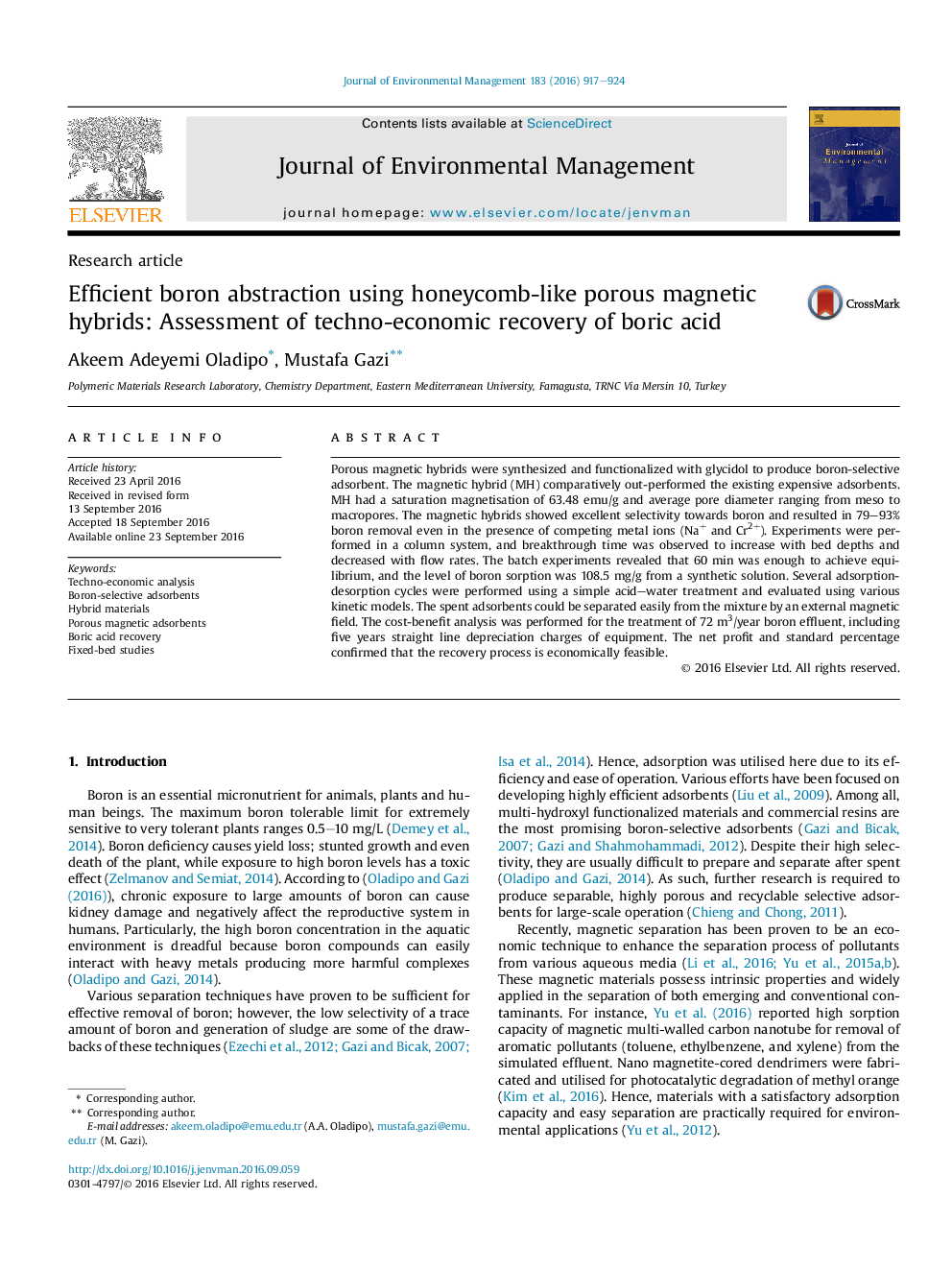| Article ID | Journal | Published Year | Pages | File Type |
|---|---|---|---|---|
| 5117229 | Journal of Environmental Management | 2016 | 8 Pages |
â¢Economic porous magnetic hybrid (MH) synthesized for boron removal.â¢The sorption was evaluated by both batch and fixed-bed passage.â¢Cost-benefit analysis was performed for the treatment of 72 m3/year boron effluent.â¢Mathematical models were applied to describe the desorption process.â¢MH showed excellent selectivity towards boron in the presence of interfering ions.
Porous magnetic hybrids were synthesized and functionalized with glycidol to produce boron-selective adsorbent. The magnetic hybrid (MH) comparatively out-performed the existing expensive adsorbents. MH had a saturation magnetisation of 63.48 emu/g and average pore diameter ranging from meso to macropores. The magnetic hybrids showed excellent selectivity towards boron and resulted in 79-93% boron removal even in the presence of competing metal ions (Na+ and Cr2+). Experiments were performed in a column system, and breakthrough time was observed to increase with bed depths and decreased with flow rates. The batch experiments revealed that 60Â min was enough to achieve equilibrium, and the level of boron sorption was 108.5Â mg/g from a synthetic solution. Several adsorption-desorption cycles were performed using a simple acid-water treatment and evaluated using various kinetic models. The spent adsorbents could be separated easily from the mixture by an external magnetic field. The cost-benefit analysis was performed for the treatment of 72Â m3/year boron effluent, including five years straight line depreciation charges of equipment. The net profit and standard percentage confirmed that the recovery process is economically feasible.
